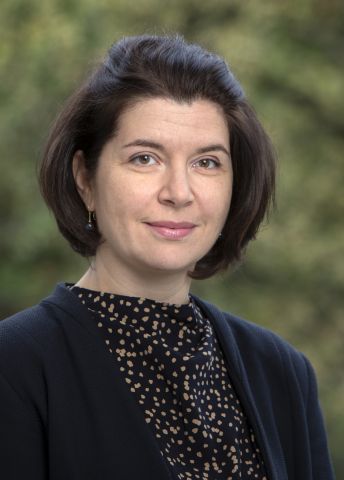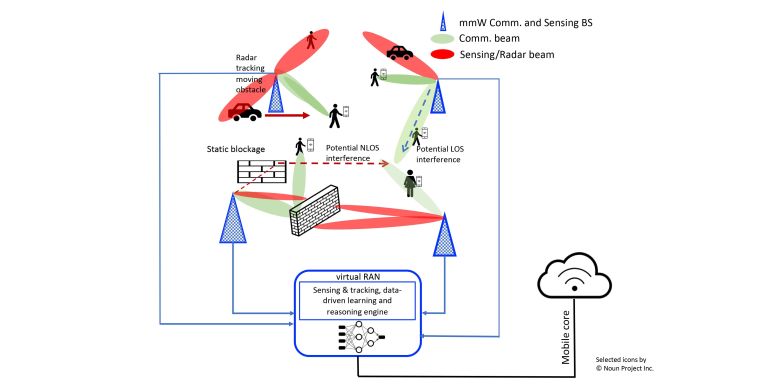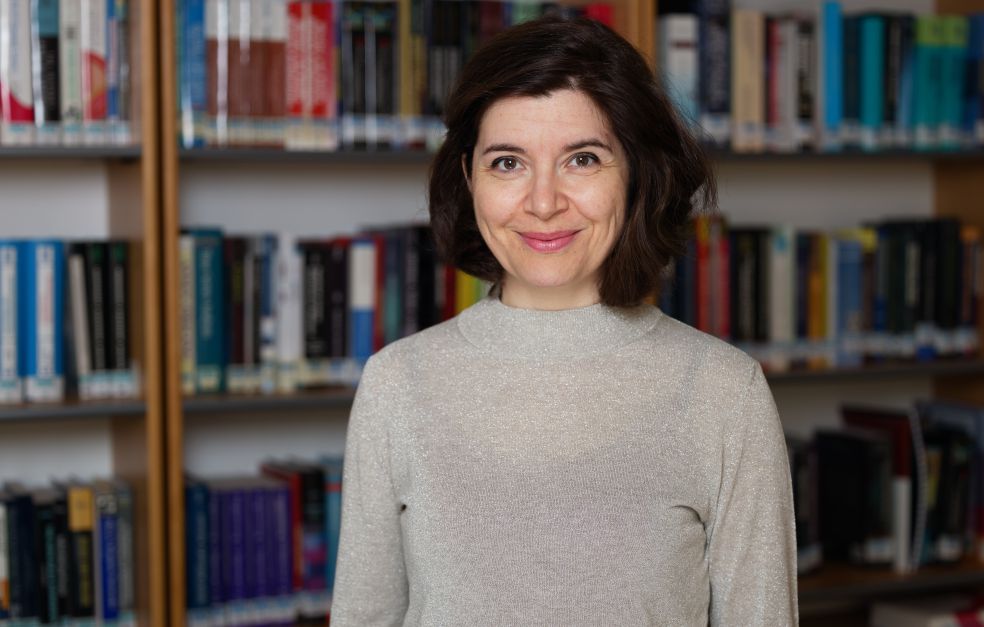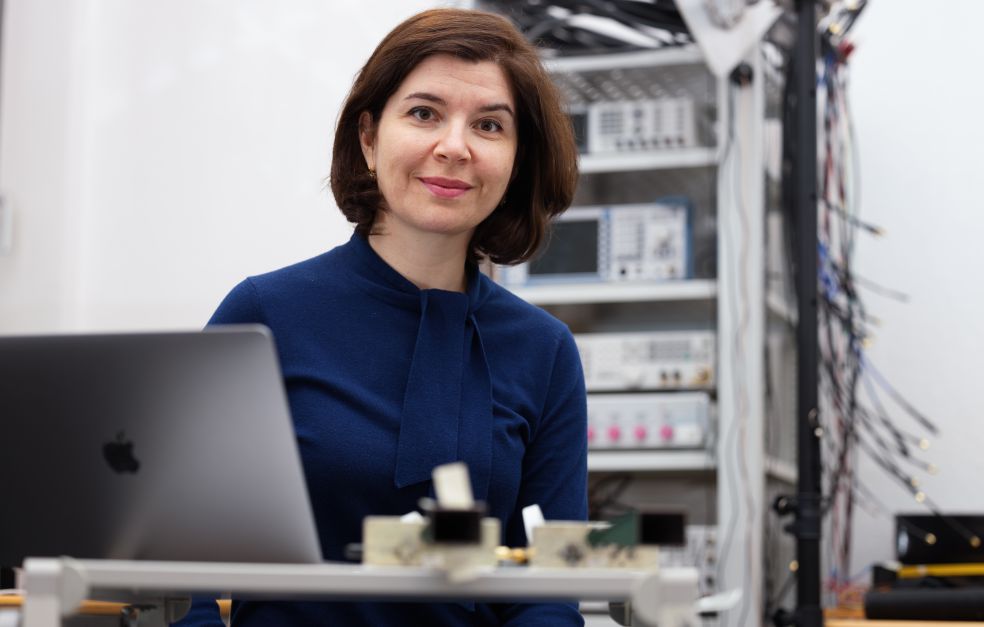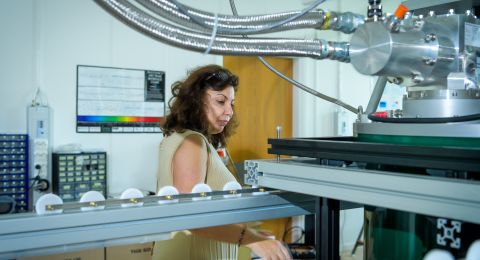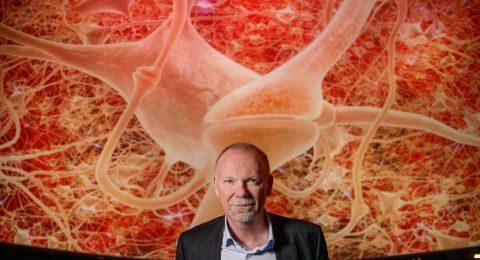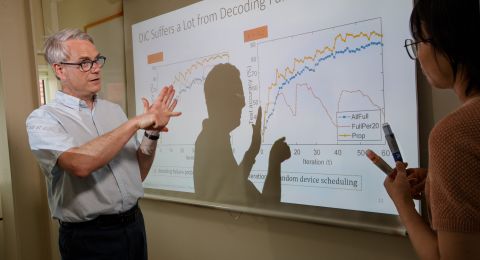The internet of things will be achieved by connecting up innumerable objects so they can communicate with each other. For this, it will be essential to develop high-speed intelligent wireless networks. Marina Petrova’s research has its sights set beyond 5G, on cognitive network systems at high radio frequencies, in the millimeter-wave band.
Marina Petrova
Associate Professor of Wireless Communication
Wallenberg Academy Fellow 2019
Institution:
KTH Royal Institute of Technology
Research field:
Development of cognitive wireless network systems, and methods enabling transmission of information and communication in the millimeter wave band (mmW).
“These are interesting times, with a huge increase in wireless data traffic. This is due to a shift in the way we create, share and consume information. Our smartphones are essentially our doorway to society and the world,” says Petrova, who is an associate professor of wireless communication at KTH Royal Institute of Technology.
In the near future more and more things, people, businesses and societal services will exchange information at instant speed. Many of the new applications in the Internet of things will be operated wirelessly. Examples include factory robots, self-driving ambulances or people communicating in a virtual reality.
“All predictions for the coming decade, whether they come from Ericsson, Cisco or some other major player, reveal an enormous demand for upgrading wireless networks to support the need for immediate communication, i.e. ultra-fast wireless transmission of data from A to B.”
Developments are also taking place in “haptic communication”. Petrova explains:
“Within ten years or so we may well be able to use applications to touch, feel and smell via wireless communication. For all this to happen we will need to be able to send large quantities of data at high speeds in a robust and secure way.”
“I quickly found out how highly appreciated and important Knut and Alice Wallenberg Foundation is for the funding of basic research, and for research freedom in Sweden. Being awarded this grant is an acknowledgement that what I am doing is relevant, interesting and exciting.”
Beyond 5G
The fifth generation mobile network – 5G – is being rolled out by telecom operators around the world. 5G will utilize wide bandwidths together with beamforming enabled by refined antenna techniques to provide higher data rates to mobile users.
Petrova says that the 5G systems will continue to be developed over the next few years. And the need for more and faster data transfer will ultimately necessitate the use of radio frequencies other than those in the traditional spectrum bands.
“To date we have used frequencies below 6 GHz. But we are on our way out of that spectrum, and need to move on to higher frequencies.”
Petrova’s research is concentrating on the millimeter-wave band (mmW) in the range 24–80 GHz. Here, the greatest challenge is that the properties of electromagnetic waves in high-frequency bands prevent coverage of large areas. Millimeter-waves are blocked by various obstacles such as walls and humans for example, with a resulting need for more base stations. The energy in the radio waves must be concentrated in narrow beams to travel a few meters between transmitter and receiver.
“That’s why mmW is not being used in the initial 5G roll-out. There are still quite a few difficulties to be resolved.”
Unblocking the signal
The grant from Knut and Alice Wallenberg Foundation gives Petrova the opportunity to address the challenges posed by blocking of the radio signal at mmW frequencies.
“We want to use sensing, imaging and machine learning technologies to find ways of getting round the bottlenecks in the field of mmW, and design algorithms to align the beams. The overall goal is to create cognitive networks, capable of sensing where the users are, and possessing enormous quantities of information about their patterns of behavior, and how they move around, so as to give them ultra-fast and seamless communication.”
A combination of sensing via radar technology and telecommunication may be a way forward. Petrova and her research team are now studying how these two technologies can co-exist in the mmW band.
The research primarily involves system and simulation studies, combined with experiments and prototypes. The most promising solutions are tested by setting up and testing networks in the laboratory at KTH Royal Institute of Technology.
“We have demonstrated in our laboratory that mmW communication works, i.e. that the radio link is not interrupted between transmitter and receiver. But we want to achieve this function on a larger scale.”
Happening at last
Petrova graduated in electronic engineering and telecommunications in her home city of Skopje in North Macedonia. She moved to Sweden to take up a position at KTH in 2016, following a time at RWTH Aachen University in Germany, where she successfully completed a PhD thesis on cognitive wireless networks, and had a research team.
She recalls that when she was working on her PhD, one of the major research issues was, aptly enough, how to make communication networks smarter by using large quantities of external information.
“It’s interesting to see how ideas from the past can now be realized. Some things had to happen first, and are happening very quickly right now. We had the concepts and the algorithms, but we lacked cloud technology, processing power and memory capacity in the systems. Only now, with the arrival of 5G, can we see how these intelligent network systems are starting to take shape. But there is still much to do,” Petrova says.
Text Susanne Rosén
Translation Maxwell Arding
PhotoMichael Popa, Marina Petrova, Markus Marcetic
